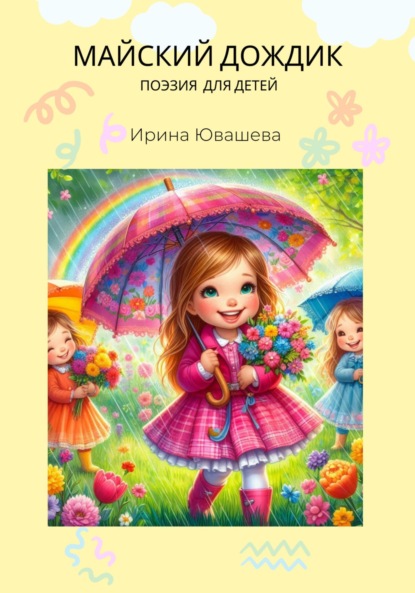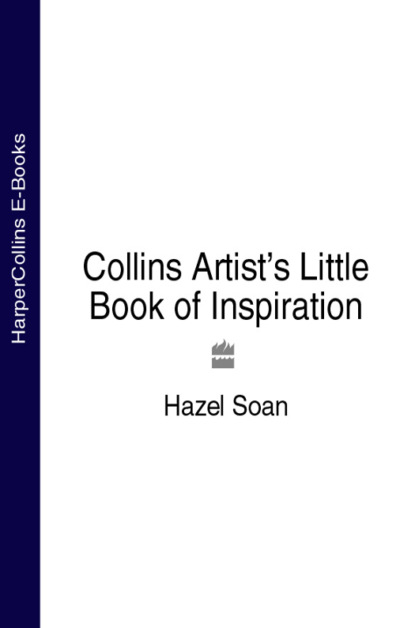По всем вопросам обращайтесь на: info@litportal.ru
(©) 2003-2024.
✖
Collins Artist’s Little Book of Inspiration
Автор
Год написания книги
2019
Настройки чтения
Размер шрифта
Высота строк
Поля
THE SPACES IN BETWEEN Pick a group of objects from the bathroom cupboard. Place the items in a line with gaps between them. Paint just the spaces in between and around the items. Be aware of the distances across each item to the next space. Aim to describe the items only by the spaces around them – and the items will appear as if by magic!
THE SPACES WITHIN Observe and draw the spaces inside cups and jugs and their handles. Draw the shape of the spaces rather than drawing the items or handles themselves. I have used charcoal and white acrylic on stained paper.
FINDING THE ESSENCE OF THE SUBJECT Find a picture of something that stirs your emotions. I chose a photograph of a father leaning down to his son; the guiding link of hands seemed to represent fatherhood. Draw the image onto your paper looking only at the subject and not down at the page. Use lines back and forth over areas until you feel you have familiarized yourself with the subject. Resist the temptation to look at your drawing. When you have finished you will probably be horrified at the muddle on the page, but now start again.
This time you can look at your drawing while you try in a few meaningful strokes to distil from the image the lines you think best describe its meaning.
postscript
Follow these exercises by drawing the spaces under chairs and tables, the intervals between tree trunks and spaces under tree canopies. Always check that the height, width and proportion of the space corresponds to what you see.
View from the London Eye (detail) 43 x 28 cm (17 x 11 in), acrylic on canvas
Discovering composition
‘The composition is the organized sum of the interior functions (expressions) of every part of the work.’
Kandinsky
Every picture has a boundary that is determined by the limits of the surface on which it is painted. The actual painting takes place within that perimeter, though it need not fill the area, and the effect of the painting may be to extend well beyond its outlines. Good composition is fundamental; it is inspired by the subject matter, but not ruled by it.
Naturally good compositions occur all around us, though they are not always readily apparent. Somewhere within the scene is the painting-in-waiting; and recognizing it and translating it onto paper is the art of composition. This simply means being aware of a workable set of shapes, lines, colours and tones that, grouped together, make an inspiring pattern on the picture surface.
Finding the painting
Obviously picturesque views would appear to make good paintings, and often there is a sense of obligation to paint them, but they may not immediately have what a painting needs to be interesting. The artist must therefore either jiggle the view around or perhaps take a small part of the view that provides a more satisfactory composition.
Readymade compositions
A satisfying, asymmetrical, but balanced, arrangement of elements usually ensures a successful composition. If the shapes, colours and tones are well arranged you will find it easier to make the painting work, but this does not mean that it has to be harmoniously balanced, or overly planned. Jarring or obscure arrangements make interesting compositions too. All you need is to recognize what will work on the two-dimensional picture plane.
The morning after the night before, 1. 1. 2000 20 x 20 cm (8 x 8 in), watercolour and ink The composition is unbalanced, but the sentiment is strong and the sketch remains as a good New Year memory. Is that not a good enough reason for a painting?
The source
If you have control over the physical elements you are painting, as in a still life or portrait, you can move parts of the actual subject around until the whole arrangement pleases the eye. It is easier to glean your shapes, colours and tones direct from the source than to make wild guesses about what might look better.
In the landscape you cannot always find perfect compositions – few of us can move mountains! Sometimes you must sacrifice literal truth for pictorial success. Always remember the painting lives on independently of its source of inspiration. Even if your painting intends to be a truthful record of the view, you may have to make alterations to the composition; move trees closer together or leave out a few fields perhaps. Free yourself from the obligation to paint everything in front of you; that is not a recipe for success.
Sketching
Filling a sketchbook with ideas before embarking on a painting enables you to respond quickly to the inspiration of your subject and to find out what really interests you, without having to worry about planning your composition. These immediate unplanned images are often the most exhilarating work of an artist, and it is worth remembering that it is also possible to over-compose a painting to the point where predictability kills off its life. Pay heed to your sketchbook; it can teach you much about how you see and what excites you.
How to compose
To find the two-dimensional layout of the three-dimensional world look through a viewfinder. I often use my index fingers and thumbs to make a frame, but the best way is to hold two L-shaped pieces of card together. You can make any rectilinear shape to suit the view or the painting. As you look through the viewfinder move it around until you find the best layout within the rectangular space. Half close your eyes so that you can see tonal balance and relative shapes.
Transition II 20 x 28 cm (8 x 11 in), oil on canvas The division of a sky-meets-land composition is a good starting point. Here, the horizon is placed above the centre line to avoid dividing the painting in half, and the line of rocks is balanced by the line of surf and the reflection.
Breakfast on the Terrace 43 x 58 cm (17 x 23 in), watercolour A lot is happening in this painting, but by organizing the composition of the items in the foreground the background activity could be painted in with more abandon.
The focal point
Usually the subject of your painting will be the focal point, the place in the painting you wish to draw the viewer’s eye towards. Sometimes, of course, the subject is intangible – an atmosphere or an emotion – but there may still be an area of the painting, large or small, that you wish to emphasize.
If the subject of your painting is a particular feature place its position within the boundary of the composition before drawing the peripherals. There is nothing more dispiriting than drawing a picture starting from the edges, only to find the main feature is too far over to one side and you have to start all over again.
The picture plane
To simplify drawing the composition imagine there is a pane of glass held vertically in the viewfinder. This is your picture plane. Trace the main shapes and lines onto this imaginary glass. Point your finger into the middle to find a central reference and work out from there.
Flow lines and repetition
Within your view look for lines that lead the eye from the edge of the composition towards the main features or focal point, or that lead the eye out from the centre of the painting to the perimeter and beyond. Notice other lines that repeat or echo the lines of the main feature. These emphasize your focus of interest, though you may not even realize that they have attracted you until you start to draw the composition. Examples could be the direction of a pathway echoed in the rhythm of some branches, the edges of items on a table converging to a common point, or the position of limbs paralleled in the folds of clothes. Repetition of a shape can also be visually interesting.
There are no rules in painting, but generally horizon lines are better placed above and below the centre line, and main features not placed dead centre. A subject’s power to convince will rely on shape, colour and tone. Think two-dimensionally; use shadows and spaces to help define solid forms.
PROJECT
Everyday inspiration
Now it is your turn to discover the potential compositions in your immediate vicinity. Use a viewfinder if it helps and do not be embarrassed to be seen looking through your framed fingers. Any medium will do. I have used oils on paper and a size 9 brush.
MATERIALS USED
oils
paper
BALANCE OF LIGHT AND DARK TONES A contrast of tones can be used as a strong compositional device in a picture. Light coming through a garden gateway can look more dramatic than a quiet, even light.
ITEMS IN RELATION TO EACH OTHER Go round your home and garden and find some readymade compositions. Draw quickly, but place the items accurately in relation to each other on the page. A pile of ironing provides interesting shapes.
WIDE VIEW Now take any view, inside or outside; I picked the sitting room. Hold up your viewfinder as near to your eyes as possible so that you see the largest view. Using a brush, sketch the main elements of the image. Does it make a good composition?
CLOSING IN ON A DETAIL Finally, go in close on a detail within the view, and make a quick sketch noting the balance of light and dark. I chose the pile of magazines on the coffee table.
NARROWING THE FIELD Next take a section of the view, not quite as wide as the first, and by moving the viewfinder around try to pick out an interesting group of shapes. Make another quick sketch with your brush.
postscript
You can check the strength and balance of your composition by looking at the sketch reflected in a mirror. If you are unhappy with it start again.
Voyeur (detail) 28 x 20 cm (11 x 8 in), watercolour
Responding to colour
‘Give me mud and I will paint you the flesh of Venus.’





